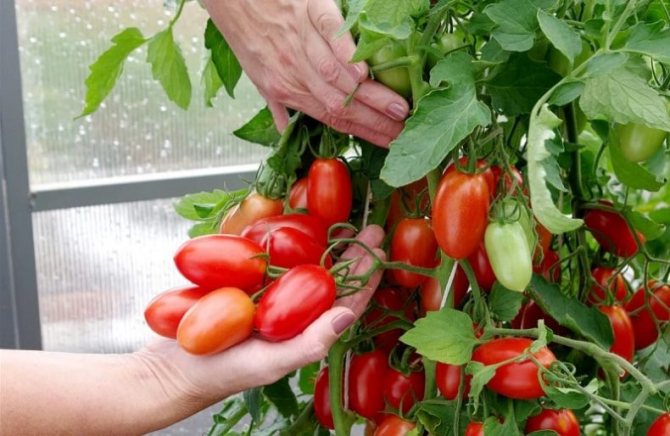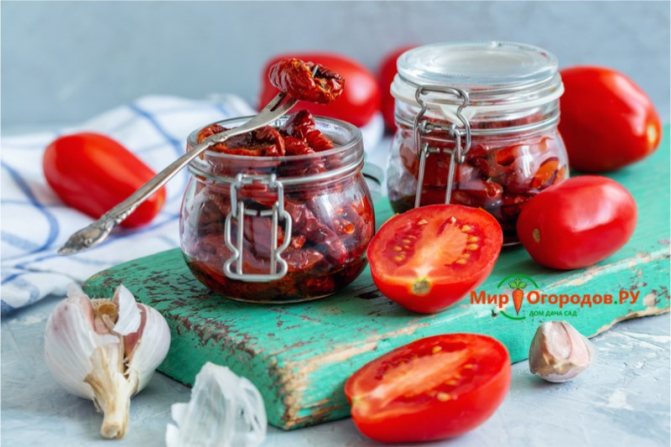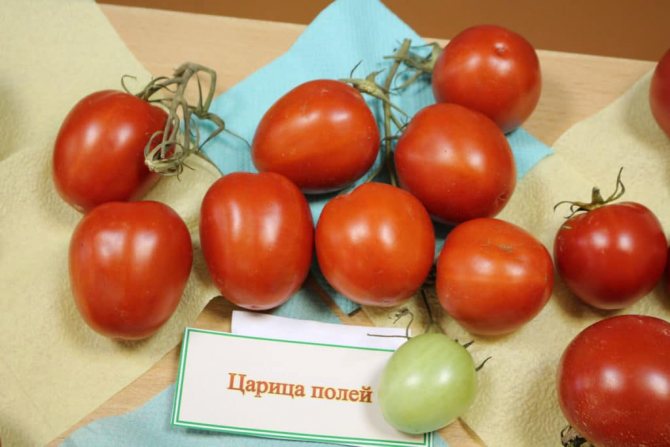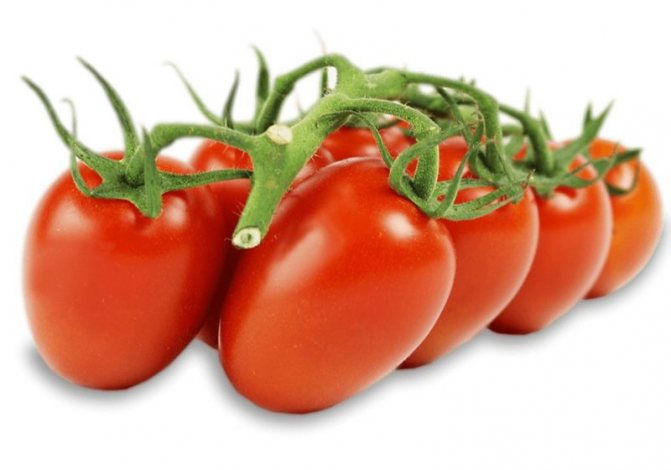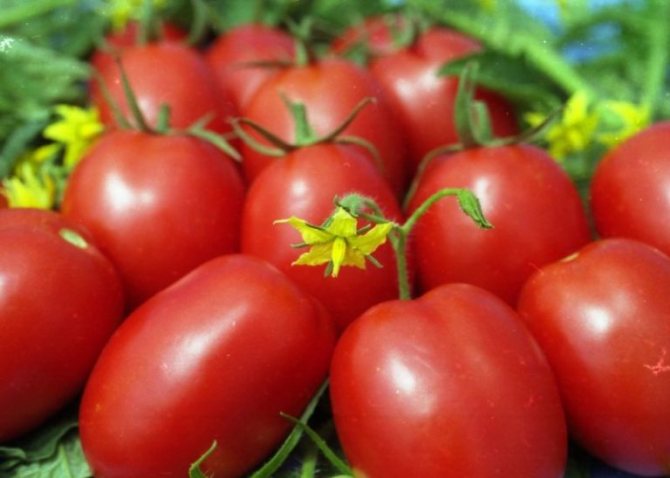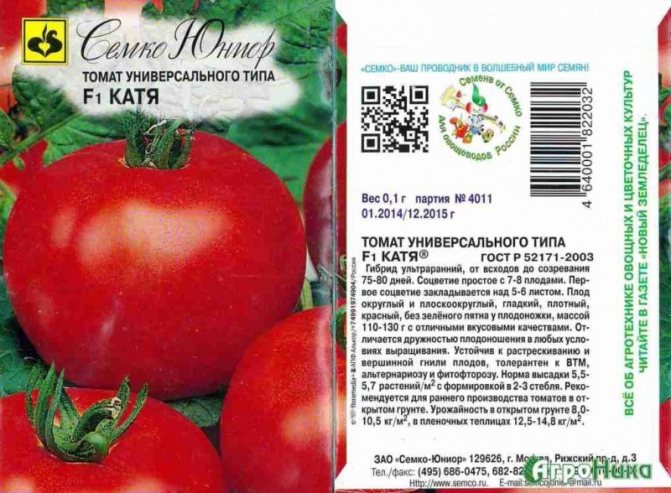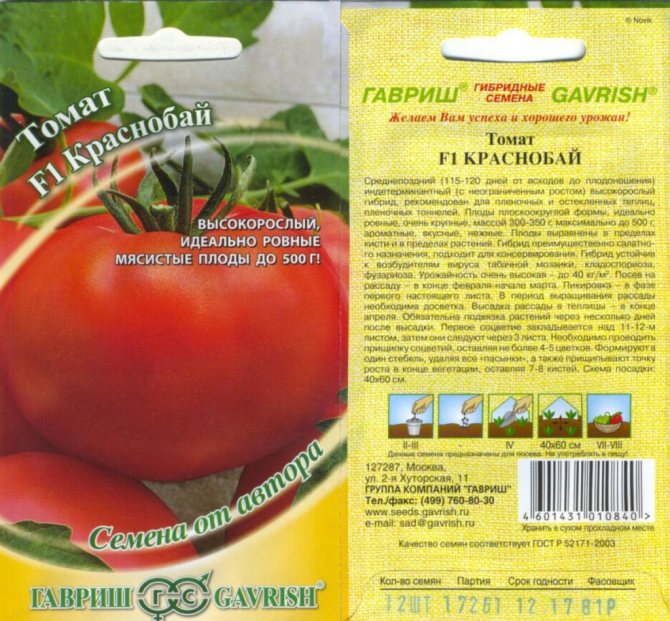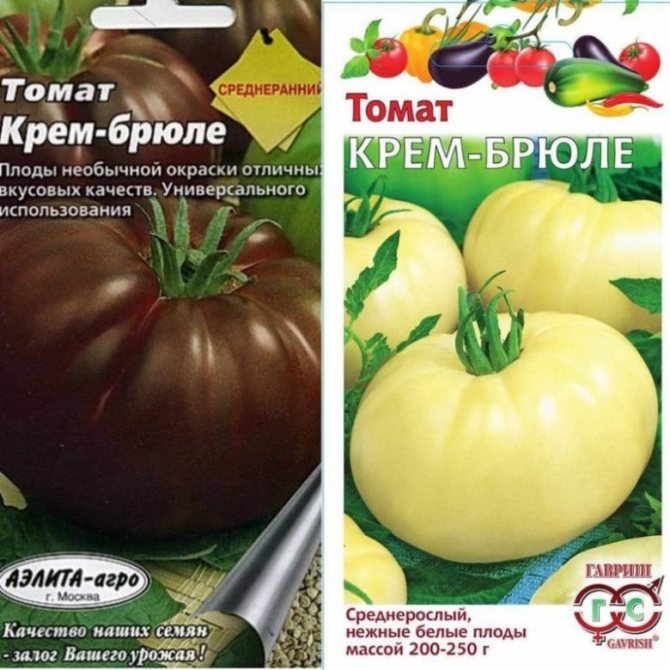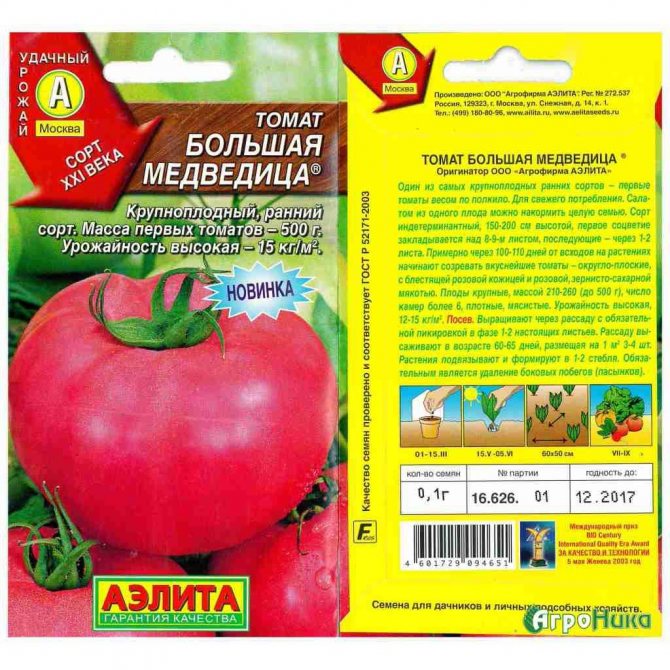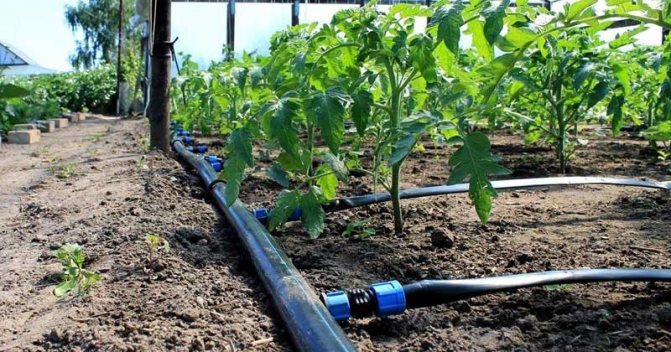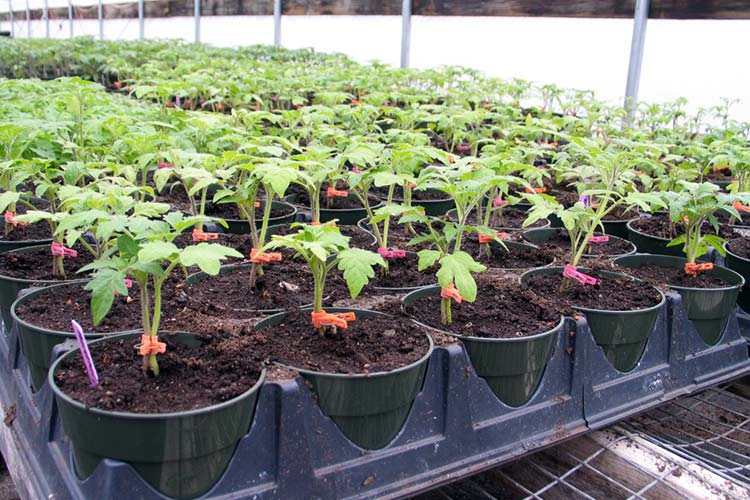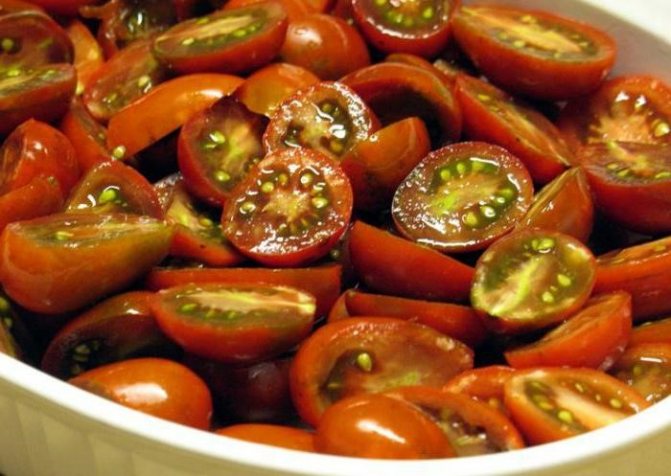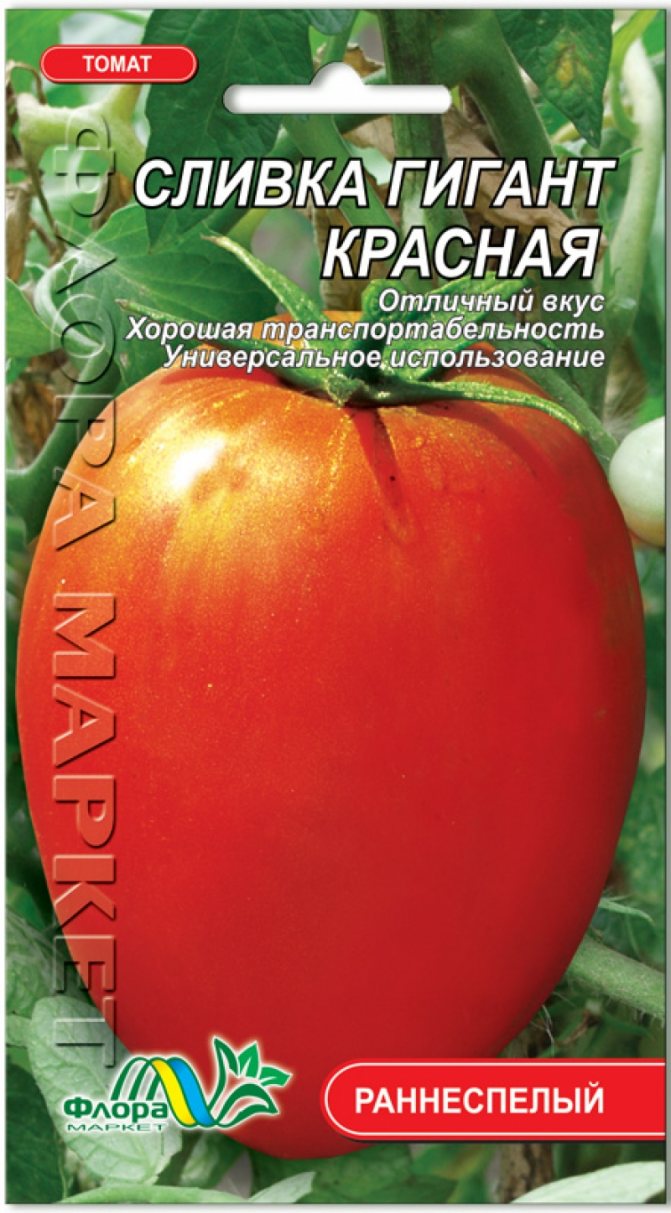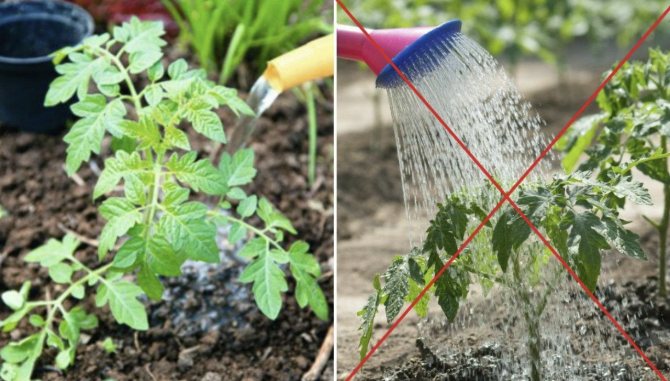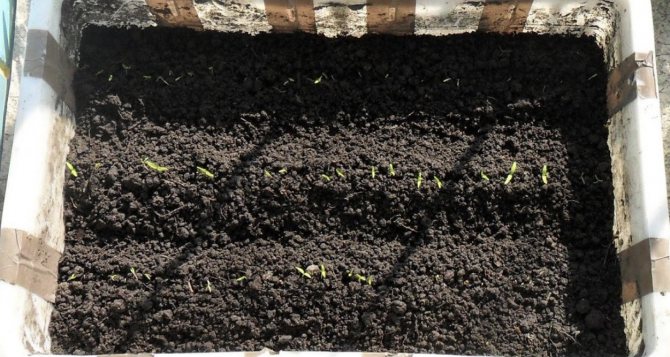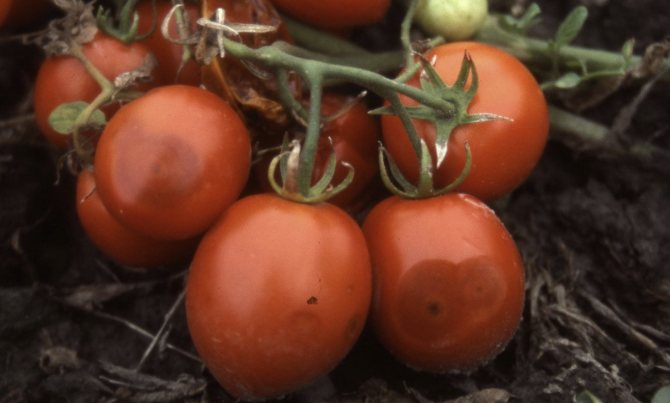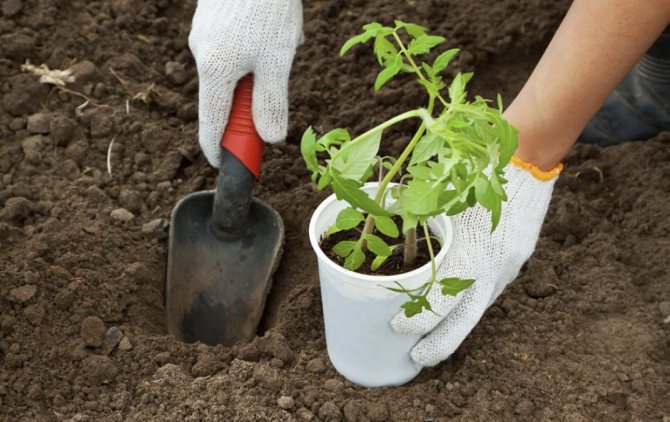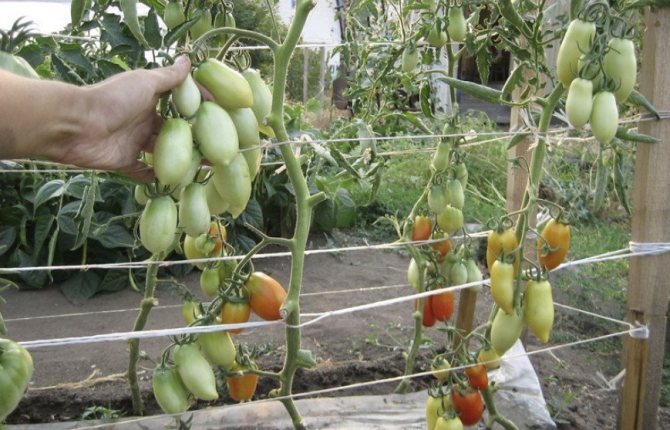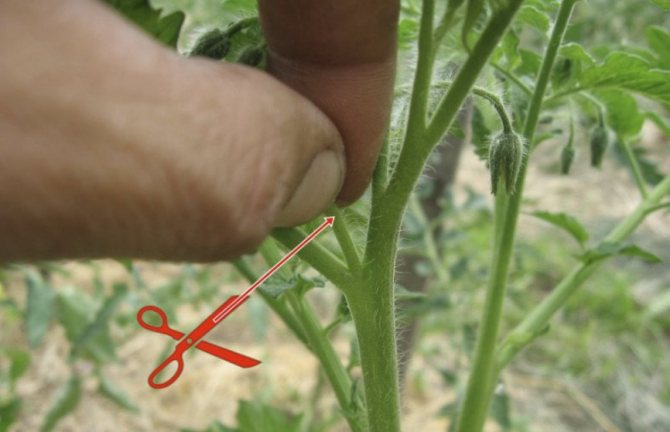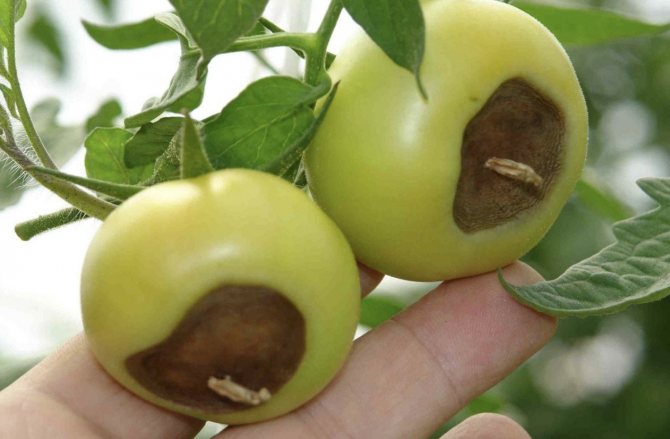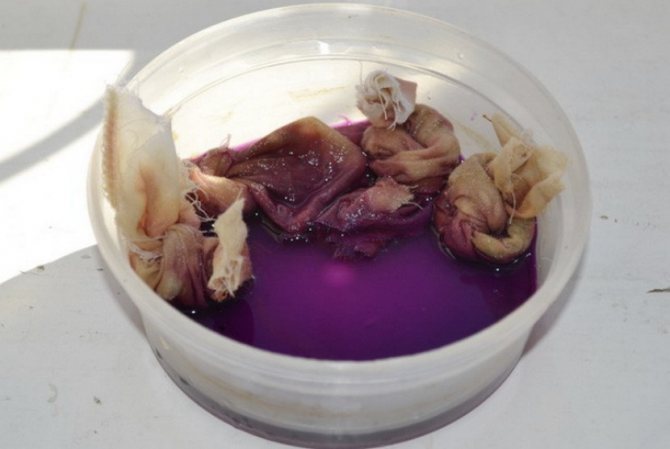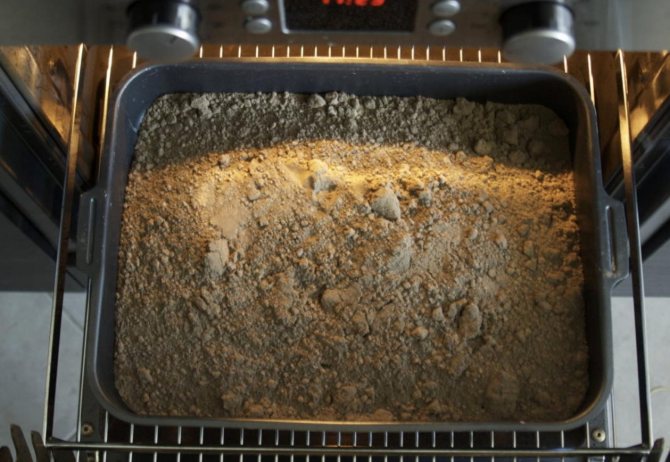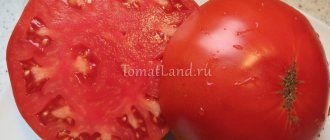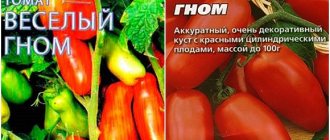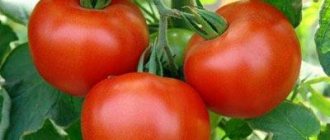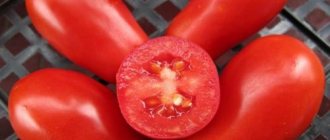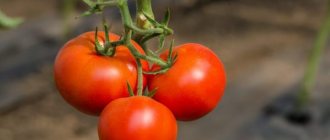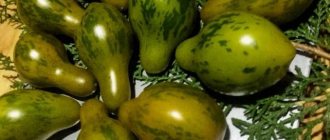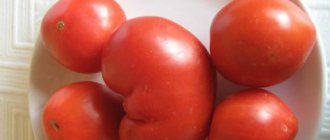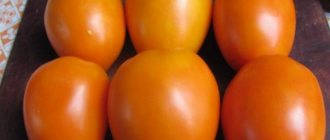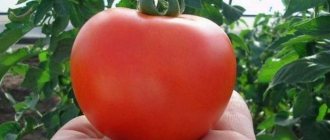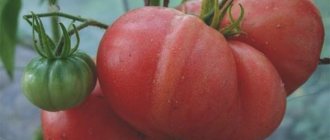Vegetable growing »Tomatoes
0
2416
Article rating
Cream tomatoes are a category of varieties so named because of the ellipsoidal shape of the fruit. Such varieties have been bred for a long time, and many site owners know about them. The main purpose of growing these nightshades is whole-fruit canning and fresh fruit consumption. Plum tomatoes are compared to cherry varieties, but are more productive. These varieties are an excellent choice for both an experienced gardener and a novice summer resident.
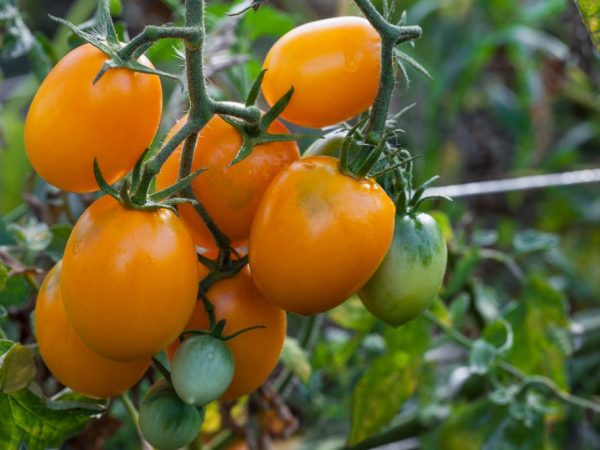
Tomato varieties Cream
Characteristics and description of the variety, yield indicators
Cream has a wide variety of varieties: early maturing and late, and undersized and tall, up to indeterminate vines. Most subspecies are intended for open beds, but some of them thrive better in greenhouses. This variety is known all over the world for its extraordinary oblong shape, reminiscent of a plum.
Tomatoes Cream is a high-yielding tomato variety that has a variety of flesh colors. Depending on the variety, the fruits are bright red, orange, violet-blue and other colors. Housewives prefer pink cream, they say that such tomatoes are the most delicious and tender.
Fruit weight varies between 50-120 g. From one square meter of tomato planting, 7 to 10 kg of fruits are harvested. The vegetable has a strong skin and dense pulp that does not crack during storage and transportation. The fruit contains a small amount of grains.
There are more than a dozen varieties of Cream. Tomatoes ripen in the same time frame as regular tomatoes:
- early - up to 90 days;
- medium - up to 120 days;
- late ripening - over 120 days.
Also, the fruits contain a small amount of liquid, which is why they are not used for juicing. Low-calorie tomatoes, 100 g contains 22 kcal. The branchiness of the bushes is medium. Leaves are dark green in color, inflorescences are light yellow. The height of an average bush is 40-70 cm, but some subspecies reach 1.5-2.5 m.
On a note. Tomatoes Cream of a small size is successfully grown even on a veranda, windowsill or balcony.
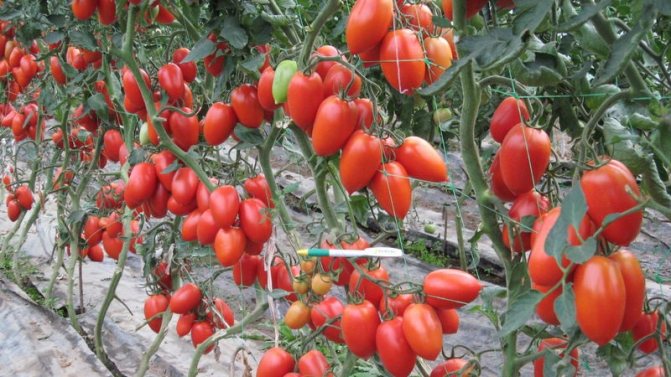

Where culture is applied
To determine the use of the grown crop of plum tomatoes, you need to know their basic qualities. Almost all varieties have fruits:
- with dense pulp and strong skin that does not crack under the influence of external influences;
- contain more sugar than acids;
- tolerate transportation well;
- keep their presentation for a long time;
- with few seeds.
Housewives appreciate the cream harvest. Small fruits weighing 7-10 grams are used for salads, decorating dishes, drying and pickling. Tomatoes in 30 grams are also ideal for winter harvesting. Sauces are prepared from them, fruits are rolled up in their own juice.
Advantages and disadvantages of Cream
Advantages of Cream and its varieties:
- the variety gives a bountiful harvest;
- all cream is beautiful to look at;
- tomatoes are stored for a long time and practically do not deteriorate;
- tomatoes have a sweet delicate taste;
- tomatoes are easy to grow;
- fruits are easy to transport;
- versatile in use;
- the variety is resistant to pests and diseases.
There were practically no flaws in the variety, except for the need for regular feeding and watering.
Biological features
Cream tomatoes are an annual plant in the Solanaceae family. The tomato has a highly developed root system, it has several adventitious roots. The stem of the plant can be straight and lodging. The tomato is divided into two types: determinant and indeterminate.
The green leaf can be solid or jagged. The plant is most often self-pollinating. The inflorescence is small, yellow.
Tomatoes are thermophilic vegetables that do best in sunny areas. For proper development, a temperature of around +25 degrees is required. With a sharp cold snap, the plum tomato stops flowering and growth.
Most popular varieties
Let's consider the most popular varieties of Cream.
Moscow Cream... The variety is early maturing, the harvest is harvested 100-110 days after planting the seeds. The crop is intended for cultivation both in greenhouse conditions and in the open field. It is famous for its high yield and strong immunity.
Royal Cream Is an early ripening variety. It is usually grown in the open field under a film. The bush grows up to 60-75 cm, but at the same time it gives a bountiful harvest. Royal tomatoes have an elongated cylindrical shape and have a pleasant smell.
Yellow Cream... Tomatoes are appreciated for their ease of care and excellent taste. The bush grows up to 1.5 m and needs a garter. On the garden bed, they are grown only in warm areas with early spring and hot summer. With this cultivation, additional watering is needed. This variety is early maturing, the fruits are harvested already 90 days after planting.
Argentinean Cream red. The variety is fruitful, mid-season. The height of the bush reaches 2 m. Beautiful fruits have excellent taste. Fruit weight is small - only up to 80 g. Tomatoes are ideal for preservation. In addition, the culture has a stable immunity to diseases and does not suffer from pests.
Brazilian Cream... A culture with such an exotic name grows up to 1.5 m. Small fruits of bright red color weigh up to 60-70 g, are pear-shaped. Tomatoes taste sweet. The variety is grown only in a greenhouse, but the scope is not limited.
Honey Cream... This variety has strong immunity and good disease resistance. Tomatoes are unpretentious to care for, great for growing by novice gardeners. The fruits are bright red in color and have a wonderful sweet taste. Fruit weight rarely exceeds 50-70 g.
Tomato Black Plum Is a mid-season variety for outdoor cultivation. Bushes reach 2.5 m. The culture bears fruit in 110-120 days. The color of tomatoes is not always black, rather, it ranges from dark red to purple-blue.
Chio-chio-san... A tall, branched subspecies that looks like a tomato tree. It is grown both in the open field and in greenhouse conditions. A distinctive feature of the variety is large clusters with an abundance of pink fruits.
Sunny Bunny F1... The hybrid is early maturing and tall. Recommended for growing in greenhouse conditions. The bush has small clusters with bright yellow fruits of a delicate sweet taste, has a strong immunity to diseases and pests.
Cream giant... The shrub grows tall and produces a large bountiful crop of tomatoes. The fruits ripen 115 days after sowing the seeds, the average weight of one vegetable is 100-120 g. The fleshy tomato has a sour taste, is stored for a long time and tolerates transportation well.
Watercolor... The Siberian variety belongs to the early maturing (the harvest is harvested three months after the sowing of the seed). Watercolors do not need garter and pinching. Red tomatoes have an oval shape and an average weight of up to 120 g. The high-yielding variety is resistant to septoria and rot.
For your information. In medicine, tomatoes are often used as a cure for burns and wounds, as their pulp contains phytoncides that prevent the development of infections.
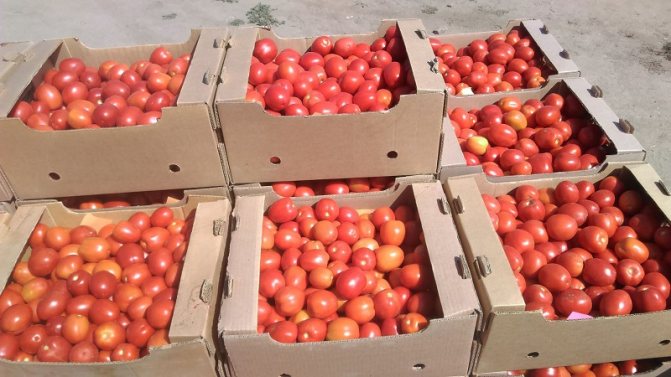

What should be considered?
The zoned varieties have passed serious tests in specific climatic conditions. The Russian State Register of Breeding Achievements updates the lists annually. For the Moscow region, tomatoes are suitable, recommended for the Central region or universal ("for all regions").
INTERESTING! Experienced gardeners note that varieties from Siberia, the Urals, and the northwestern regions of Russia also successfully bear fruit near Moscow.
In addition to the selection of varieties, special attention should be paid to the quality of the seeds. To protect yourself from counterfeiting and misgrading, you need to take seed from the most reliable producers, relying on your own experience and advice from competent friends.
Expert opinion
Stanislav Pavlovich
Gardener with 17 years of experience and our expert
Ask a Question
IMPORTANT! Should be critical of enticing advertising promises.
How to Grow Cream
Sowing of seeds is carried out in late winter and early spring (February-March). The terms are set depending on the variety itself and the time of growing seedlings (from 45 to 75 days).
What should be the soil
The soil for growing tomatoes should be slightly acidic or neutral. If the acidity of the soil is increased, dolomite flour (crushed lime, wood ash) is introduced into it.
The plot is not suitable for tomatoes, if pepper, eggplant, physalis grew on it last year. Otherwise, the rules of crop rotation will be violated.
To get a bountiful harvest, the soil is fertilized with organic matter. To do this, in the fall, rotted mullein or compost should be scattered (a bucket for one square meter). Phosphorus-potassium fertilizing is also important (20 g per sq. M).
At the beginning of spring, it is recommended to enrich the soil with nitrogen fertilizers, which have a beneficial effect on the growth of young shoots.
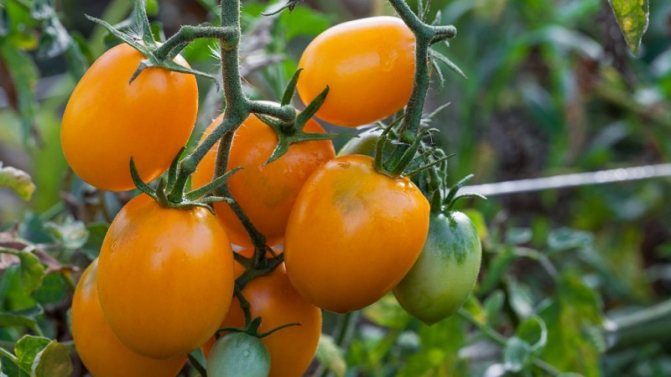

Sowing rules
Before sowing, the seeds must be warmed up by placing them in a warm place (two days at + 30 ° C, then three days at + 50 ° C) and soak for 30 minutes in a slightly pink solution of potassium permanganate. Soil for tomatoes is disinfected by spraying with EM-Baikal.
Pots or wooden boxes with a height of at least 10 cm are suitable as containers. Peat tablets are also used. The depth of planting seeds in wet soil is 1 cm. After planting the material, cover the container with foil.
Suitable seedling conditions:
- for seed germination, set the temperature to about +25 ° C;
- in a week we remove the film and put the seedlings in a well-lit place;
- we lower the temperature regime: at night to + 8 ... + 10 ° С, in the daytime + 10 ... + 15 ° С;
- after 7 days we increase the temperature: at night up to + 14 ... + 16 ° С, during the day + 20 ... + 25 ° С.
The room with seedlings must be ventilated, but at the same time, drafts and a critical drop in temperature must be avoided.
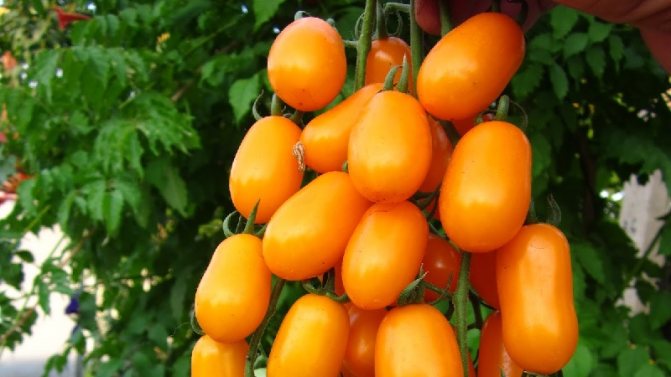

Transplanting tomatoes into open ground
Seedlings are planted during the period when a positive night temperature is established (late May-early June). One sq. m have 3-5 plants. The bush will get stronger by that time, and will have 7-8 leaves.
The culture is transplanted into moistened wells at right angles to the ground. The soil is compacted over the roots. A fourth or even a third of the stem is placed in the ground. If the region is windy and is characterized by heavy rainfall, it is advisable to install a small peg for each plant, which will serve as a support for it.
Cream care after transplant
The rules for caring for Cream are practically no different from the agricultural technology of tomatoes in general.
For the normal cultivation of tomatoes, the garden needs to be weeded regularly. Weed removal is done to prevent planting from thickening, which provokes fungal diseases and attracts pests. In addition, weeds are dangerous in that they absorb all the moisture and useful minerals in the soil, thereby robbing tomatoes and preventing them from growing and developing normally.
Loosening is carried out for better development of the root system, which saturates the soil with oxygen and prevents moisture stagnation.
As a rule, both procedures (weeding and loosening) are combined. The bushes are huddled to increase their resistance. This is especially important for tall subspecies and windy environments.
The garden bed is watered 2-3 times a week (6-7 liters of cold water per sq. M). In stagnant hot weather, the amount of liquid is increased to 10 liters per square meter. m. Soil moistening is carried out either in the morning or in the evening. The main thing is not in open sunlight.
For crops, it is better to use a drip irrigation system. Sprinkling provokes the fall of inflorescences. Conventional irrigation with a hose is carried out at the root with a low pressure.
On a note. The simplest drip system is made from ordinary plastic bottles. We cut off the bottom, make several holes in the cap, dig in the bottle with the neck down near each bush and fill it with water. The advantage of the system is that you can replenish moisture reserves at any time of the day and in any weather.
For the entire growing season, the culture is fed at least twice. The first fertilization is carried out 3 weeks after planting seedlings in open ground, the second - after another 3 weeks, during the onset of intensive fruit formation.
A combination of the following components is used to prepare the nutritional formula:
- potassium (15 g);
- nitrogen fertilizers (25 g);
- phosphorus substances (40 g);
- water (10 l).
Mineral dressings are dry sealed in the aisles.
As the bush forms, the stepsons are removed once a week. In the second half of August, pinch the tops so that the fruits themselves develop better. The lower leaves take away the strength of the plant, they also need to be cut off.
Some vegetable growers make mistakes when growing tomatoes. Here are the most common ones:
- tomatoes are planted in the same place every year;
- seedlings are planted tightly - if the seedlings are planted close to each other, they cannot develop normally;
- violate the irrigation regime (both drought and an abundance of moisture are dangerous for tomatoes);
- too much fertilizer is introduced, overfeeding the plants, which leads to a waste of resources for the growth of the tops, and not for the setting of fruits.
For your information. It is better to plant tomatoes of different ripening periods. This way, you will get a continuous tomato harvest from June to October.
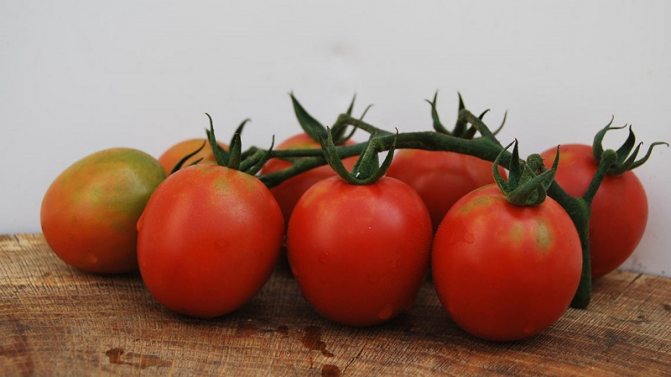

Landing
Seeds are pre-prepared for sowing. Among the preparatory activities:
- selection of uniform seeds without defects;
- rejection by soaking in a saline solution (leaves the seeds settled to the bottom);
- disinfection from bacteria (1% potassium permanganate or peroxide);
- activation with Epin, Agatha;
- soaking for 20-24 hours in settled water.
Achieve increased germination and earlier fruiting by bubbling. The ripening procedure is reduced to 5-7 days.
Prevention of diseases and pests
The variety has strong immunity. The culture is rarely exposed to diseases of fusarium, wilting, late blight and rot. However, young plants are afraid of aphids and other insects. They get rid of pests with drugs "Aktofit" or "Operkot". To remove the Colorado potato beetle, apply "Prestige" or "Regent".
Attention! Many varieties of Cream are resistant to most diseases, but tend to be affected by late blight and need to be treated with drugs. Information about the susceptibility of the crop to certain diseases should be indicated on the seed packaging. In this regard, hybrids are the most stable.
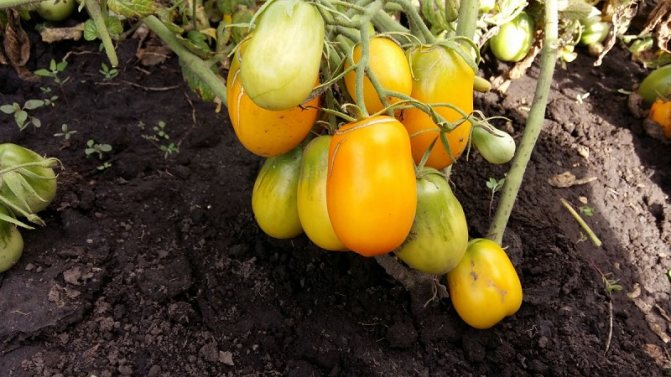

Video
Next, you will see a video review of the best tomato varieties:
https://youtu.be/1B3l_E97NSk
| Early ripe | Mid late | Medium early |
| Raspberry Viscount | Yellow banana | Pink Bush F1 |
| The Tsar Bell | Titanium | Flamingo |
| Katya | F1 slot | Openwork |
| Valentine | Honey fireworks | Chio Chio San |
| Cranberries in sugar | Market miracle | Supermodel |
| Fatima | gold fish | Budenovka |
| Verlioka | De Barao black | Major F1 |
If you find an error, please select a piece of text and press Ctrl + Enter.
Reviews of tomatoes Cream
Cream has gained great popularity among gardeners. Most summer residents believe that these tomatoes are worthy of attention. However, there are those who do not like tomatoes. Consider some reviews about Tomato Cream.
Galina: “I love Cream. We use these tomatoes in any form: we ferment, preserve, freeze and even dry. I am not even talking about fresh consumption - my grandchildren pluck it straight from the garden. Favorite varieties of my whole family are Honey and Yellow Cream. They are the sweetest and brightest. I recommend these species for planting! "
Ivan: “I don’t like this variety. In my opinion, the Cream is rather dry and requires a lot of attention. I prefer to grow and use classic varieties with large juicy fruits for preservation and cooking. "
Tatyana: “I have been growing cream for a long time, for about 10 years already. This variety was once recommended to me by a consultant in an agricultural store, when I decided to diversify my beds with new types of tomatoes. Over the years, I have tried almost all subspecies, I especially liked the Royal Cream for a bountiful harvest, pleasant aroma and the opportunity to enjoy your favorite tomato at a time when others are just beginning to ripen. The cream is fleshy, strong, has a long shelf life and is easy to transport. I plant the seeds directly into the ground, cover them with foil and do not bother myself with unnecessary manipulations with the seedlings. I like growing Cream because it is not capricious in its care and is not afraid of pests. "
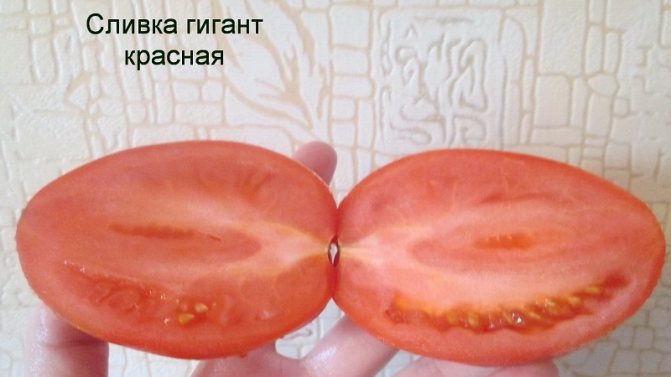

Garden beds near Moscow
In each region of Russia, summer residents have their own favorite varieties of tomatoes. If we consider the characteristics and description of the tomato variety Slivovka and others in the table below, you can understand why they are so attractive to gardeners in the Moscow region.
Tomatoes popular in the Moscow region
| Variety | Features of the |
| Slivovka | · Super early variety that gives a pretty cream with a "spout". Fruits of red color are smooth, slightly flattened at the stalk. They have a juicy fleshy pulp and a sour taste; |
| Ogorodnikov attracts with its unpretentiousness, good immunity, formation of ovaries, regardless of weather conditions, amicable return of the harvest; | |
| · Fruits are marketable, transportable. If you remove the brown ones from the bush, then until the beginning of winter they calmly lie in the cellar. Good in conservation | |
| Cream Honey Tomato | · The hybrid variety is represented by determinant standard bushes. Despite the early maturity, they are grown not only in the open field, but also in the greenhouse; |
| · The smooth red fruit with fleshy pulp has high tasting qualities and has a pleasant aroma. A special feature of the honey cream tomato is a small number of chambers with seeds; | |
| · With the weight of tomatoes up to 70 g, you can get about 4.5 kg from one square meter; | |
| The variety is characterized by the following qualities: marketability of Cream, resistance to diseases, stable yield | |
| Moscow | · This is not just a variety - this name represents several varieties of crops that differ in color shades. The most popular among farmers are chocolate and yellow; |
| · Tomatoes Cream Moskovskaya have a sweetish taste with a slight spicy note, which allows the variety to be used more often than others for making ketchups and sauces; | |
| · Fruits are firm, low in moisture and high in glucose. At the time of ripening, tomatoes reach a mass of 130 g, which ensures a good yield; | |
| The variety is unpretentious to growing conditions, but has a weak immunity against fungal diseases | |
| Lady finger | · Determinant bush, up to 1 m high, bears fruit in 3.5 months after planting. Graceful tomatoes in shape correspond to their name. Elongated tomatoes grow up to 8 cm in length and gain a mature mass on average of 140 g; |
| · From one square meter, with the usual agricultural technology, the summer resident collects up to 6 kg of elastic fruits with a glossy skin. They are suitable for long-term transportation, retain marketability for a long time and have good taste. |
Having studied all the characteristics of tomatoes, gardeners select those that they like the most. When choosing varieties for open ground, the emphasis is on regionality, because for areas with a short growing season, you should not choose late-ripening cream.
Bush care
The Bendrik Cream bushes need to be formed in a timely manner. They begin to conduct it 14 days after disembarking for permanent residence. Gradual pinching "on a stump" 2-3 sheets is recommended. It is necessary to lead the plant strictly in 1 stem, removing all lateral stepsons and pinching the tops above the 3rd brush.
Secrets of avoiding the originator of the variety Bendrik A.N.:
- Watering. Water as the soil dries up, in the morning, at the root. Avoid getting liquids on green parts of plants. Water for irrigation should be warm and settled. Do not water in cold weather;
- Mulching cut grass immediately after watering;
- During flowering spray bed "Bioglobin";
- At the stage of blanch maturity, tomatoes are additionally spudcreating a comb. This is necessary to remove excess moisture;
- During a period of sudden cooling of the plant harbor polyethylene.
Read also: Smoke-generating ability of burning material
Official information
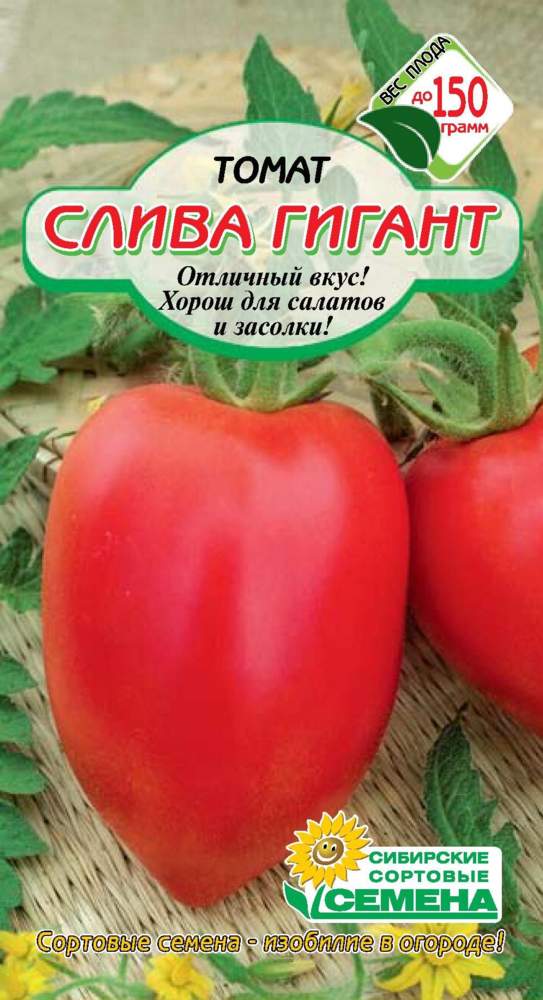

As you understand, "Giant Cream" is part of a whole type of tomato. It is difficult to say exactly when the idea of creating a series arose. The fact is that any species includes many varieties that were bred in different years and even decades. One thing is known for sure that the breeders wanted to achieve versatility in cooking from the future tomato, a long shelf life. And if we talk about Giant Cream, then there are also large fruits, of which there are not so many in the series. Breeders received a lot of different varieties, according to a number of data, there are more than 150 of them.
Fruit
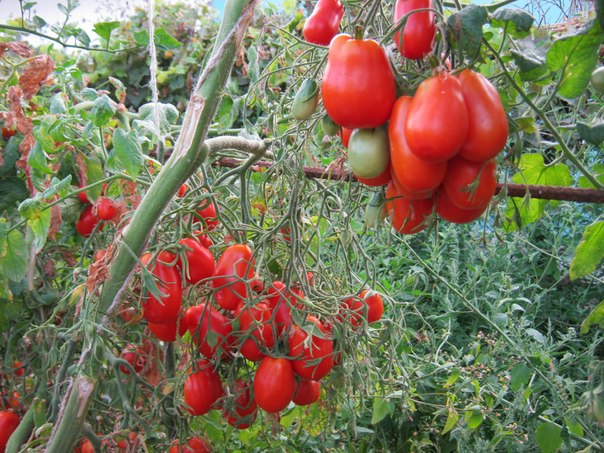

Separately, it should be said about the tomatoes themselves. The whole series got its name for a reason, but for the shape of the fruit in the form of cream - there are simply elongated tomatoes, there are with a small nose. "Giant Cream" was no exception, tomatoes of different colors of this subspecies are all elongated. They are strong, the pulp contains little water, seeds. Due to which the crop is stored for a long time, it can ripen.
Due to the large mass of fruits, the harvest is always good and there is something to prepare for the winter. Often, "Giant Cream" and its varieties are grown for sale. Their performance is conducive to this, and demand is always high. Cream Giant tomatoes can be seen in markets throughout the country. They are perfectly stored, have a decent presentation. There are no complaints about the taste either.
The weight of fruits in a given series can be completely different. These are not only meaty giant tomatoes - 300 grams or more, but also compact like cherry tomatoes.

